We’ve all experienced that heart-stopping moment when we spot an eight-legged visitor scurrying across our living room floor. While spiders play an important role in controlling other pests they’re simply not welcome guests in most homes. The good news? Nature provides us with an elegant solution that doesn’t involve harmful chemicals or expensive pest control services.
Certain plants possess natural compounds that spiders find absolutely repulsive. These botanical defenders not only keep unwanted arachnids at bay but also add beauty and fresh scents to our living spaces. From aromatic herbs that double as cooking ingredients to stunning flowering plants that brighten any room we can create a spider-free environment naturally.
We’re about to explore the most effective spider-repelling plants that’ll transform your home into a fortress against these unwanted guests. These green guardians offer a safe eco-friendly approach to pest control that protects both our families and the environment.
Lavender: The Fragrant Spider Deterrent
Lavender transforms any space into a naturally protected zone while filling it with a delightful aroma that humans love but spiders actively avoid.
How Lavender’s Essential Oils Keep Spiders Away
Linalool and linalyl acetate serve as lavender’s primary spider deterrent compounds. These essential oils overwhelm spiders’ sensory systems and disrupt their ability to navigate effectively through treated areas. Research shows that spiders possess highly sensitive chemoreceptors that detect these aromatic compounds from considerable distances.
Volatile organic compounds in lavender create an invisible barrier that spiders won’t cross. The oils release continuously from the plant’s flowers, leaves, and stems, maintaining consistent protection throughout the growing season. We find that fresh lavender produces stronger deterrent effects than dried versions because active oil concentrations remain at peak levels.
Best Varieties of Lavender for Spider Control
English lavender (Lavandula angustifolia) produces the highest concentrations of linalool among all lavender species. This variety thrives in USDA hardiness zones 5 through 8 and maintains potent spider repelling properties year after year. Munstead and Hidcote cultivars offer particularly strong aromatic profiles for pest deterrence.
French lavender (Lavandula dentata) works exceptionally well in warmer climates and container gardens. The plant blooms almost continuously in zones 8 through 11, providing consistent spider protection. Spanish lavender (Lavandula stoechas) delivers intense fragrance through its distinctive topped flower heads and adapts well to various growing conditions.
Placement Tips for Maximum Effectiveness
Position lavender plants within 3 feet of entry points like doors, windows, and foundation cracks where spiders typically enter homes. Doorway plantings create natural barriers that spiders encounter before reaching indoor spaces. We recommend placing containers on patios, decks, and porches to establish protective perimeters around outdoor living areas.
Indoor lavender arrangements work best near problem areas like basements, garages, and storage rooms. Fresh cut stems maintain their deterrent properties for 7 to 10 days when placed in water. Dried lavender sachets tucked into corners, closets, and under furniture extend protection to areas where live plants can’t grow effectively.
Peppermint: A Natural Spider Repellent Powerhouse
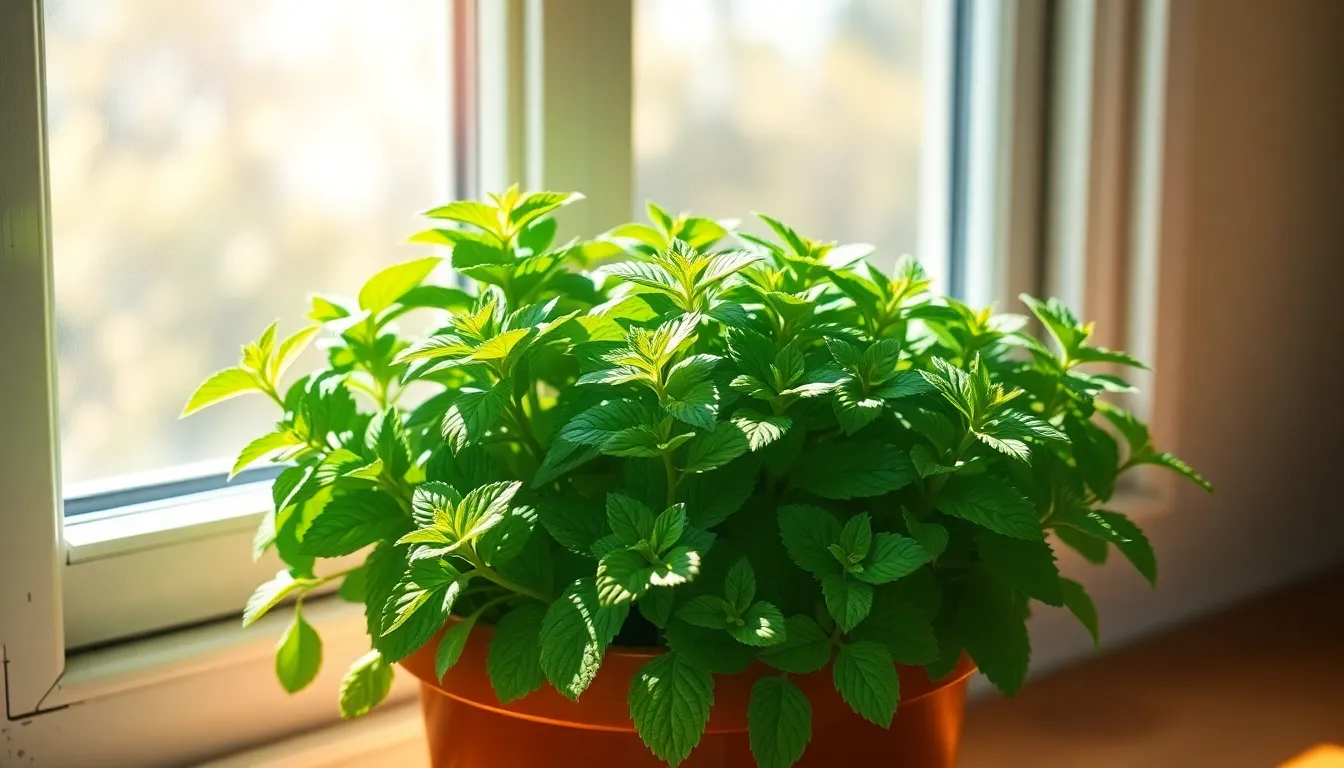
Beyond lavender, peppermint stands as one of nature’s most potent spider deterrents, offering an aromatic solution that’s both effective and versatile.
The Science Behind Peppermint’s Spider-Repelling Properties
Volatiles released by peppermint oils create an environment that disrupts spider behavior and makes areas unattractive for settlement. Research indicates that these aromatic compounds affect different spider families, suggesting peppermint’s essential oils interfere with their natural navigation systems. All varieties of mint, including peppermint, spearmint, and pennyroyal, emit strong aromas that overwhelm spiders’ sensory capabilities.
Studies show that peppermint’s concentrated scent compounds work more effectively than many other plant-based deterrents. The mechanism involves disrupting spiders’ ability to detect prey and navigate their surroundings. While some scientific debate exists about whether spiders detect smells traditionally, observable results consistently demonstrate peppermint’s practical deterrent effects in real-industry applications.
Growing Peppermint Indoors and Outdoors
Indoor cultivation of peppermint requires pots placed near windows or entryways, creating natural barriers at critical spider entry points. We recommend using rich, moist, well-drained soil with partial to full sun exposure for optimal growth. Regular watering and occasional fertilizing support healthy plant development throughout the growing season.
Outdoor growing presents different opportunities, as peppermint spreads vigorously and can cover larger areas naturally. Container growing often works best to prevent the plant from overtaking other garden plants. Designated garden beds provide another option for those wanting to establish permanent spider-repelling zones around their property.
Using Peppermint Oil as an Alternative
Essential oil applications offer concentrated spider-repelling power without the maintenance requirements of live plants. Mix peppermint oil with water in spray bottles, then apply around doors, windows, baseboards, and other potential spider entry points. This method provides immediate effectiveness and allows for targeted application in problem areas.
Concentrated peppermint oil delivers stronger deterrent effects than fresh plants in many situations. The oil’s potency makes it particularly useful for treating exact locations where spiders frequently appear. Additional benefits include deterring other insects that spiders hunt as prey, creating a comprehensive natural pest control solution for your home.
Eucalyptus: Strong Scent, Strong Protection
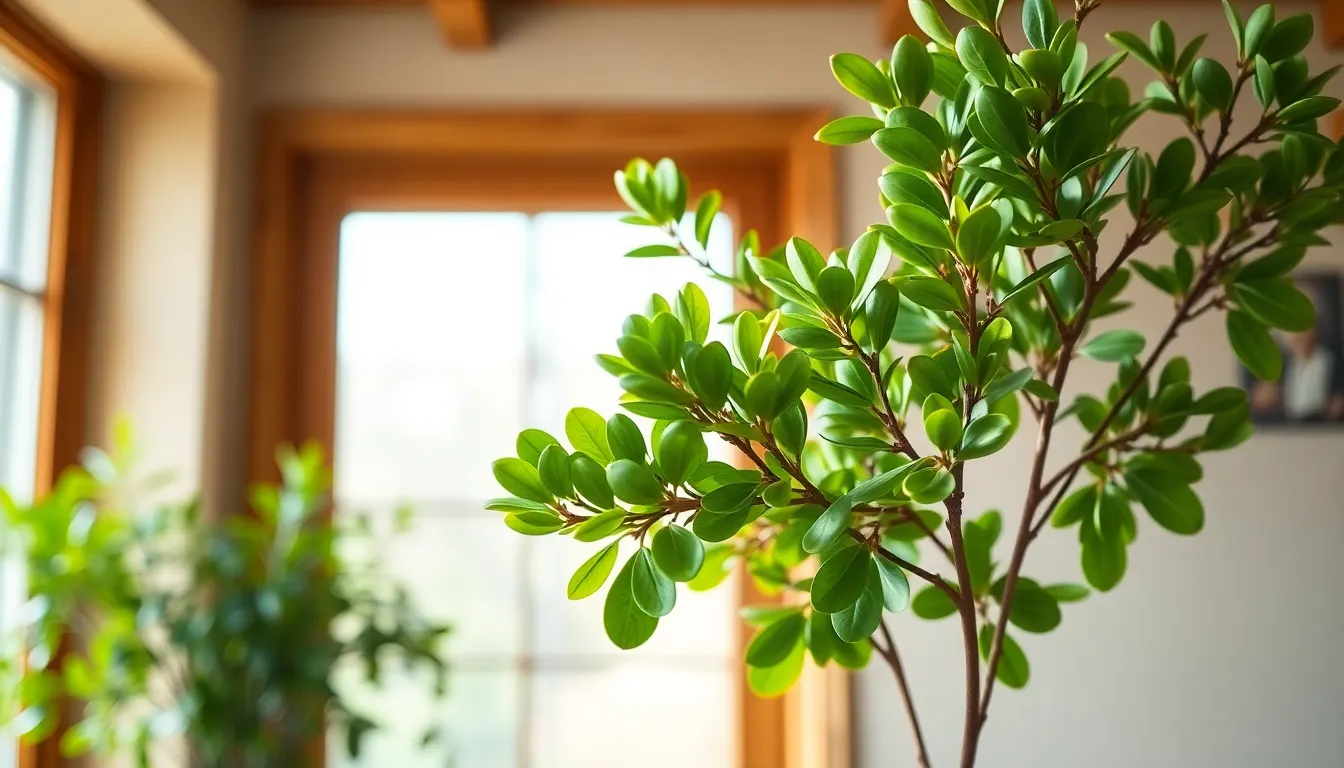
Building on mint’s impressive spider deterring abilities, eucalyptus takes natural pest control to the next level with its distinctive aromatic compounds. We’re exploring another powerhouse plant that creates an unwelcoming environment for these eight legged visitors.
Why Spiders Avoid Eucalyptus Plants
Eucalyptus plants release volatile oils that create a potent fragrance spiders find deeply unpleasant. These aromatic compounds interfere with spiders’ sensory mechanisms in much the same way that mint and lavender oils do, making the environment completely unfavorable for spider settlement. Strong scented plants like eucalyptus overwhelm spiders’ sensitive detection systems, disrupting their natural navigation abilities and forcing them to seek alternative locations.
Volatile oils from eucalyptus act as natural chemical barriers that spiders actively avoid encountering. Research shows that spiders are particularly sensitive to strong smells, and eucalyptus delivers one of the most concentrated aromatic experiences in the plant kingdom. Unlike humans who often find eucalyptus refreshing, spiders perceive these oils as threatening signals that indicate unsuitable territory for web building or hunting.
Indoor vs Outdoor Eucalyptus Growing Tips
Indoor cultivation requires strategic placement near windows with full sun exposure to maintain the plant’s oil production levels. We recommend using rich, well drained soil and establishing a regular watering schedule that prevents both drought stress and root rot conditions. Eucalyptus plants grown indoors need consistent moisture without waterlogged soil, making proper drainage absolutely essential for healthy growth.
Outdoor planting works best in USDA zones 8 and above where warm climates support eucalyptus’s natural growth patterns. Large spaces accommodate eucalyptus species that can develop into substantial trees over time, requiring thoughtful placement away from structures. Strategic positioning near doors, windows, and other entry points creates natural spider barriers before these pests attempt home invasion.
Outdoor eucalyptus thrives in well drained soil with moderate watering schedules that mirror its native habitat conditions. We suggest planting eucalyptus in areas where its eventual size won’t interfere with power lines or building foundations while still providing maximum spider deterrent coverage.
Eucalyptus Essential Oil Applications
Spray answers offer immediate spider control by diluting eucalyptus oil with water for application around home entryways and corner areas. We create effective repellent mixtures by combining several drops of eucalyptus oil with water in spray bottles for targeted application. These answers work particularly well around door frames, window sills, and basement corners where spiders commonly establish territories.
Diffuser applications spread eucalyptus aroma throughout indoor spaces using electric or reed diffusers for continuous spider deterrence. Essential oil diffusers provide consistent aromatic coverage that maintains spider repelling properties without requiring frequent reapplication. We find that diffusers work especially well in basements, attics, and storage areas where spider activity typically increases.
Cleaning integration involves adding eucalyptus oil to regular cleaning answers for surfaces that spiders might encounter during exploration. Surface treatments with eucalyptus enhanced cleaners create lasting deterrent effects on countertops, baseboards, and furniture legs. This method combines routine housekeeping with spider prevention, making eucalyptus oil a versatile addition to natural home maintenance routines.
Citrus Plants: Natural Spider Barriers
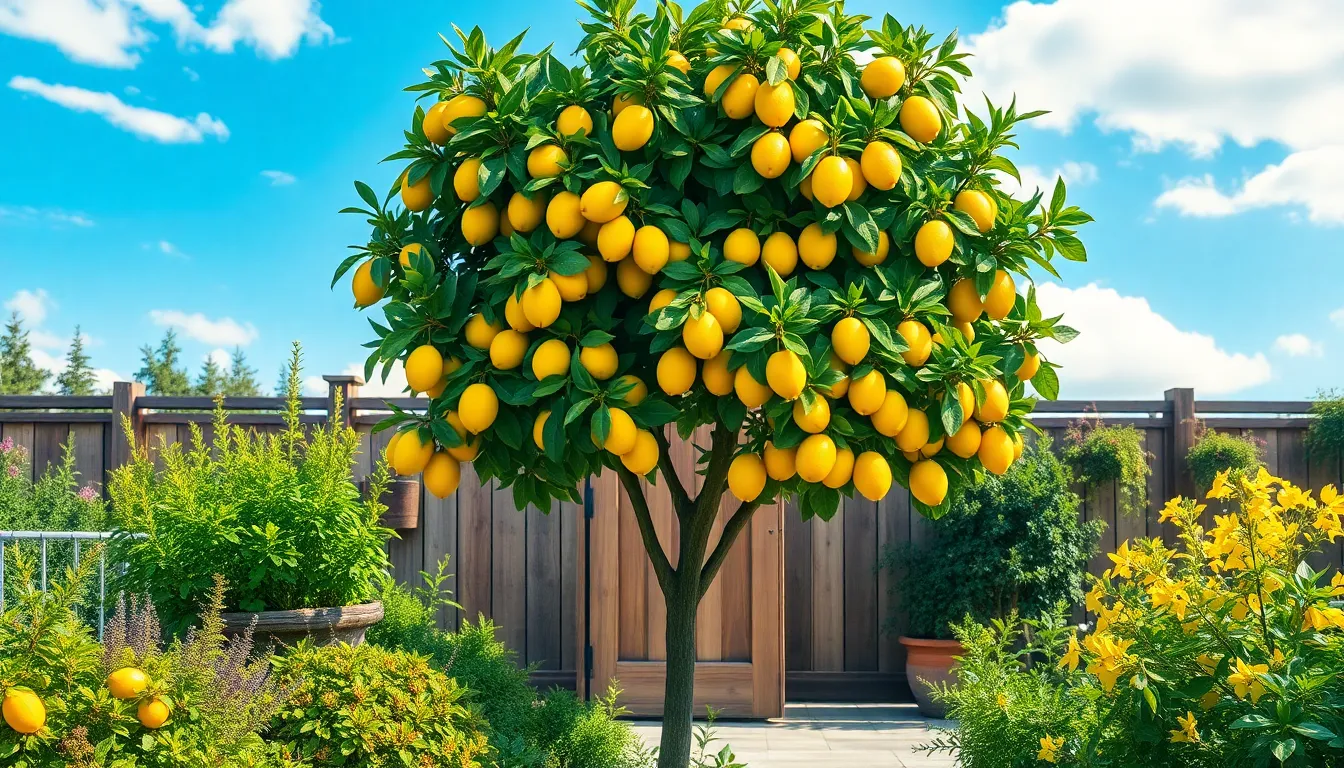
Citrus plants offer another aromatic approach to spider control, leveraging their naturally strong scents to create unwelcoming environments for these arachnids. While scientific evidence remains limited, many homeowners report success using citrus-based deterrents as part of their natural pest management strategies.
Lemon and Orange Trees as Spider Deterrents
Growing lemon and orange trees near entry points provides natural barriers against spider invasion. These citrus trees release volatile oils through their leaves and fruit that create strong aromatic zones around your home’s perimeter. Indoor dwarf varieties work exceptionally well in containers near windows and doorways where spiders commonly enter.
Positioning these trees strategically around patios and garden areas helps establish scent barriers that may discourage spider settlement. Meyer lemon trees adapt particularly well to indoor growing conditions and produce consistent aromatic compounds year-round. Orange trees like the Calamondin variety thrive in containers and emit continuous citrus fragrances that contribute to natural spider deterrence.
Regular pruning and leaf maintenance enhance the effectiveness of citrus trees by releasing fresh oils and maintaining optimal scent distribution. Watering these plants properly ensures healthy growth and consistent aromatic output throughout the growing season.
Citrus Herbs Like Lemon Balm and Lemon Verbena
Lemon balm belongs to the mint family and combines citrus scents with mint’s natural spider-repelling properties. This herb grows easily in most climates and produces intense citrus aromas when its leaves are crushed or disturbed. Planting lemon balm near doorways and windows creates aromatic barriers that may deter spider activity.
Lemon verbena offers similar benefits with its strong citrus fragrance that intensifies during warm weather. Both herbs thrive in containers, making them perfect for strategic placement around your home’s entry points. Growing these citrus herbs indoors provides year-round aromatic protection while adding fresh ingredients to your cooking.
Regular harvesting of leaves from both plants maintains their aromatic potency and encourages continued growth. Crushing fresh leaves occasionally releases concentrated oils that strengthen the natural spider-deterring properties of these citrus herbs.
Using Citrus Peels for Added Protection
Fresh citrus peels provide immediate spider deterrence when placed strategically around your home. Orange, lemon, and grapefruit peels contain concentrated oils that create strong aromatic barriers in problem areas. Replacing peels every few days maintains their effectiveness as the oils naturally dissipate over time.
Grinding dried citrus peels creates aromatic powder that can be sprinkled around baseboards and entry points. This method extends the duration of citrus protection while providing concentrated aromatic coverage in exact areas. Combining different citrus peels creates varied scent profiles that may enhance overall deterrent effectiveness.
Storing fresh peels in small mesh bags allows for easy placement and removal while containing the aromatic oils. This approach works particularly well in closets, storage areas, and other enclosed spaces where spiders commonly establish webs.
Rosemary: Culinary Herb with Spider-Fighting Benefits
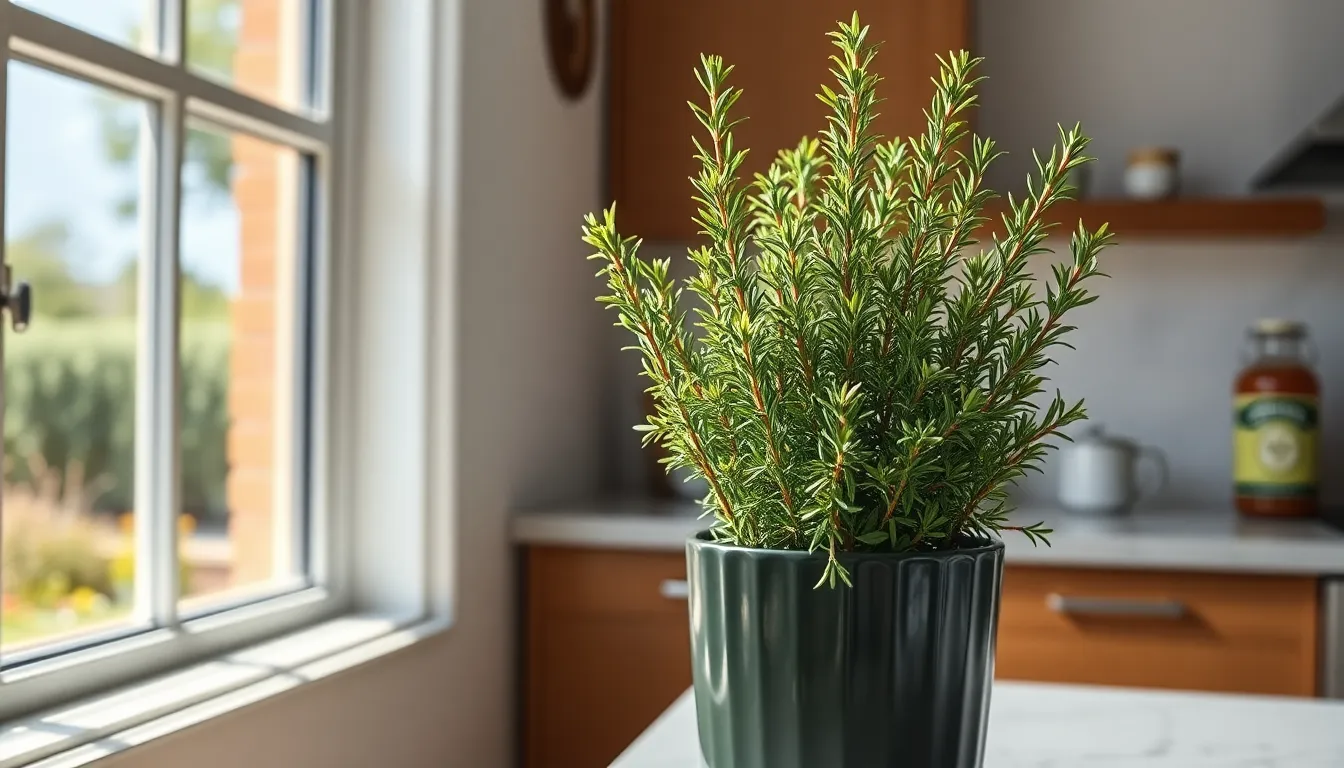
Rosemary stands out as one of the most versatile spider-repelling plants, offering both culinary value and natural pest control benefits. This perennial herb creates an aromatic barrier that spiders actively avoid while adding fresh flavor to our cooking.
Rosemary’s Natural Compounds That Repel Spiders
Essential oils within rosemary contain volatile compounds that create an unwelcoming environment for spiders. Strong aromatic properties overwhelm spiders’ sensory systems, making them seek alternative locations for web building and hunting. Camphor and cineole represent the primary active compounds responsible for rosemary’s spider-deterrent effects.
Chemical composition varies between rosemary varieties, with some cultivars producing higher concentrations of repellent oils. Mediterranean varieties typically contain the strongest aromatic profiles due to their adaptation to harsh growing conditions. Fresh rosemary releases more volatile oils than dried versions, creating more potent spider-repelling effects in immediate areas.
Container Growing for Indoor Spider Control
Container cultivation allows us to position rosemary strategically near common spider entry points throughout our homes. Windows and doorways become natural barriers when we place potted rosemary plants in these high-traffic areas. Indoor growing requires well-draining soil and at least six hours of direct sunlight daily for optimal oil production.
Pot selection influences rosemary’s growth and aromatic output, with terracotta containers providing better drainage than plastic alternatives. Regular pruning encourages bushier growth while releasing fresh aromatic oils into surrounding air. We can move containers seasonally to target exact problem areas where spider activity increases.
Harvesting and Drying for Year-Round Use
Harvesting techniques maximize rosemary’s spider-repelling potential throughout different seasons and growing cycles. Morning collection after dew evaporates ensures peak oil concentration in harvested sprigs. Cutting stems just above leaf nodes encourages continued growth while providing fresh material for spider control applications.
Drying methods preserve rosemary’s aromatic compounds for extended use in spider-prone areas of our homes. Bundle drying maintains oil concentration better than oven drying, which can destroy volatile compounds through excessive heat. Dried rosemary works effectively in sachets placed near baseboards, closets, and storage areas where spiders commonly establish webs.
Storage in airtight containers protects dried rosemary’s potency for up to one year when kept away from direct sunlight. We can create rosemary spray answers by steeping dried herbs in hot water, then straining and applying the cooled liquid around entry points and problem areas.
Chrysanthemums: Beautiful Blooms That Banish Spiders
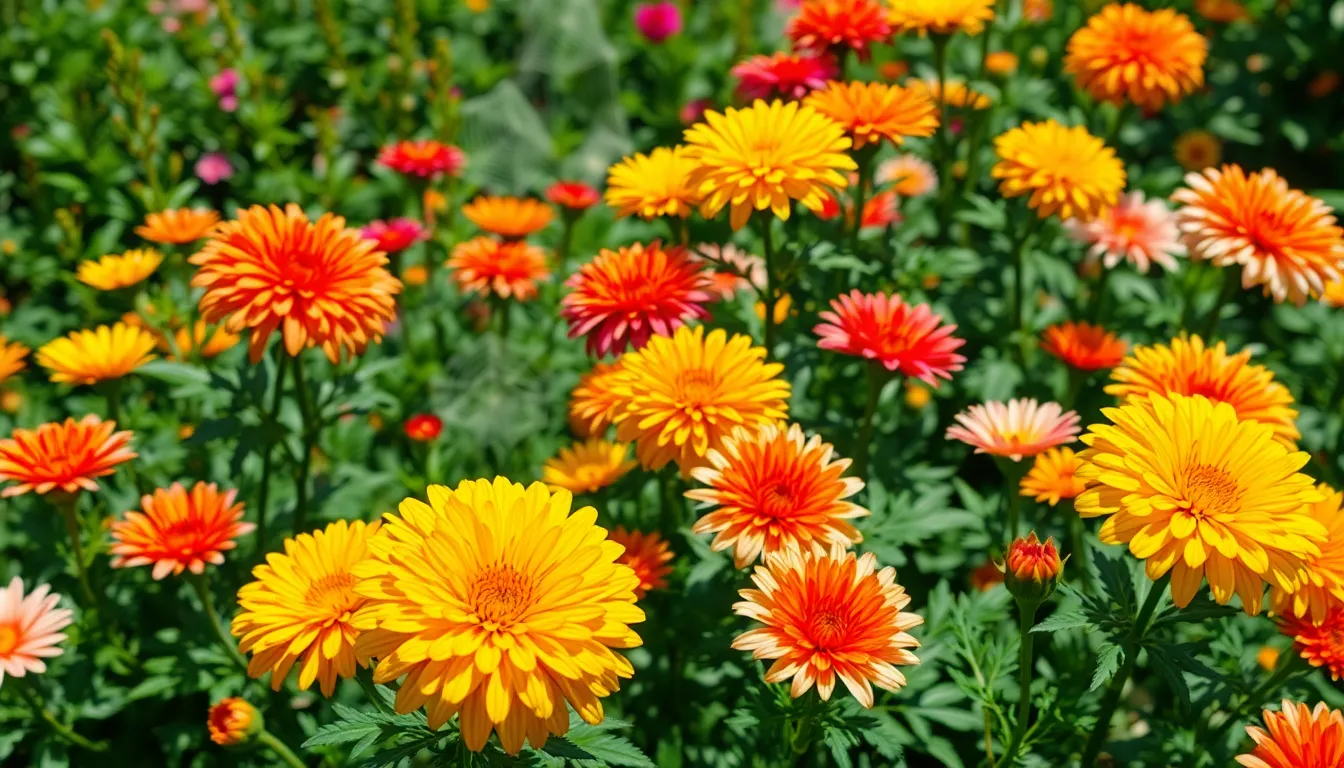
Chrysanthemums bring vibrant color to our gardens while naturally deterring spiders through their powerful chemical compounds. These beloved flowers offer a dual purpose solution for creating beautiful spaces that remain spider free.
Pyrethrin: The Active Spider-Repelling Ingredient
Pyrethrin serves as the key compound responsible for chrysanthemums’ spider repelling abilities. This natural insecticide originates directly from the flower heads and works by disrupting the nervous systems of spiders, mites, ants, and fleas. Unlike harsh chemical pesticides, pyrethrin provides effective pest control without environmental damage or health risks to our families.
Scientists have confirmed that pyrethrin interferes with spiders’ navigation systems, similar to how lavender and peppermint oils affect these pests. The compound creates an unwelcoming environment that forces spiders to seek alternative locations for shelter and hunting grounds. Fresh chrysanthemum blooms contain the highest concentrations of this powerful deterrent.
Best Chrysanthemum Varieties for Pest Control
Garden mums like Chrysanthemum cinerariifolium deliver the highest pyrethrin concentrations for maximum spider deterrence. These varieties specifically produce elevated levels of the active compound compared to decorative chrysanthemum types. Chrysanthemum coccineum ranks as another top choice among gardeners seeking natural pest control answers.
Commercial pyrethrin production relies heavily on these exact varieties due to their superior chemical output. Many gardeners prefer these functional chrysanthemums over purely ornamental types when spider control takes priority. Both varieties maintain beautiful blooms while providing consistent pest deterrent properties throughout their growing season.
Seasonal Planting and Care Instructions
Spring or early summer planting allows chrysanthemums to establish strong root systems before colder weather arrives. We recommend selecting locations with full sun exposure to promote abundant flowering and sustained pyrethrin production. Well drained, moderately fertile soil creates optimal growing conditions for these spider repelling plants.
Regular watering keeps soil consistently moist without creating waterlogged conditions that damage root systems. During dry spells, we increase watering frequency to maintain proper soil moisture levels. Deadheading spent blooms encourages continued flowering and maintains high pyrethrin output throughout the growing season.
Strategic placement near entry points maximizes chrysanthemums’ spider deterrent effects around our homes. Container growing offers flexibility for positioning these plants where spider activity occurs most frequently. Indoor potted chrysanthemums extend their protective benefits year round when placed near windows and doorways.
Basil: Kitchen Garden Hero Against Spiders

Basil brings both culinary excellence and powerful spider repelling properties to our gardens and homes. This aromatic herb releases strong scents that spiders find particularly unpleasant, making it an ideal natural deterrent for keeping these eight-legged visitors at bay.
Different Basil Varieties and Their Effectiveness
Genovese basil stands out as the classic choice with its robust sweet aroma that effectively deters spiders from entering our living spaces. This traditional variety produces the strongest scent profile among common basil types, making it particularly effective near doorways and windows.
Cinnamon basil offers a unique spicy fragrance that spiders actively avoid due to its intense aromatic compounds. We’ve found this variety especially useful in kitchen gardens where its dual purpose enhances both cooking and pest control efforts.
Lemon basil combines citrus notes with traditional basil scents, creating a powerful deterrent that overwhelms spider sensory systems. The bright, zesty aroma makes this variety perfect for indoor container growing where we need continuous protection.
Thai basil delivers the most robust protection with its distinctive licorice-like scent that effectively repels various spider species. This variety thrives in warmer climates and provides year-round deterrence when grown indoors during colder months.
Companion Planting with Other Spider-Repelling Plants
Mint varieties work exceptionally well alongside basil, as spearmint, peppermint, and pennyroyal share similar aromatic compounds that strengthen our natural spider barriers. These complementary herbs create overlapping scent zones that make areas completely unappealing to spiders.
Rosemary serves as an excellent perennial companion that spiders consistently avoid due to its strong woody fragrance. When we plant rosemary near basil, the combination creates a long-lasting deterrent system that requires minimal maintenance.
Citronella plants enhance our spider control strategy by reducing flying insect populations that serve as spider prey. This mosquito plant geranium indirectly discourages spiders by eliminating their food sources while adding another layer of aromatic protection.
Positioning these companion plants together near spider-prone areas like entryways, patios, and garden borders creates natural barriers that prevent spider establishment in our outdoor spaces.
Maintaining Fresh Basil for Continuous Protection
Indoor cultivation becomes essential during cooler months since basil cannot survive frost and requires consistent warmth for optimal oil production. We recommend growing basil in sunny windows or under grow lights to maintain year-round spider deterrence.
Proper growing conditions include full sun exposure, rich well-drained soil, and regular deep watering to maximize the plant’s aromatic oil content. Container grown basil needs daily monitoring for moisture levels, especially during hot weather when plants consume more water.
Monthly fertilization supports continuous harvesting and maintains robust growth that produces the strongest spider repelling scents. We use balanced liquid fertilizer to encourage healthy leaf production and maximize essential oil concentration.
Homemade spray preparation extends basil’s effectiveness by creating concentrated deterrent answers from fresh leaves. Drying basil leaves in vodka for several weeks, then straining and spraying the mixture around entry points, provides targeted spider control where we need it most.
Regular pruning and harvesting encourage new growth while providing fresh material for both culinary use and natural pest control applications throughout the growing season.
Marigolds: Colorful Companions in Spider Prevention

While marigolds may not be the most potent spider deterrent among flowering plants, they offer valuable indirect benefits for comprehensive spider control strategies. These vibrant blooms complement other spider-repelling plants by targeting the insects that spiders typically hunt for food.
How Marigold Scent Deters Arachnids
Marigolds produce a distinctive earthy fragrance that creates an unfavorable environment for various garden pests. Research shows these flowers excel at repelling nematodes and whiteflies, which significantly reduces the food sources available to spiders in your garden areas.
Limited scientific evidence directly links marigold scent to spider repellency, but their pest control properties create a cascading effect on spider populations. When we eliminate their primary food sources like aphids and small insects, spiders naturally migrate to areas with more abundant prey.
The compounds in marigold flowers release volatile oils that interfere with pest insect navigation systems. These same aromatic properties may contribute to making spaces less attractive to hunting spiders, though the evidence remains largely anecdotal rather than scientifically proven.
Planting Marigolds Around Entry Points
Strategic placement near doors and windows maximizes marigold effectiveness as part of your spider prevention system. We recommend creating colorful borders along walkways and foundation plantings where spiders commonly establish their webs.
Container planting offers flexibility for positioning marigolds at key entry points throughout the growing season. Place large pots flanking doorways or underneath windows where spiders frequently attempt to enter homes.
Companion planting with proven spider deterrents like mint, basil, and lavender creates overlapping protection zones. This layered approach combines marigold’s pest reduction benefits with the direct spider-repelling properties of aromatic herbs.
Dense plantings around outdoor seating areas and patios help maintain spider-free zones for entertainment spaces. The continuous bloom cycle of marigolds ensures consistent pest pressure reduction throughout the warmer months.
Seasonal Care and Maintenance Tips
Marigolds thrive in full sun conditions with well-drained soil and consistent moisture levels for optimal growth. Regular watering keeps these annual flowers blooming prolifically from spring through the first frost of fall.
Deadheading spent blooms encourages continuous flower production and maintains the aromatic compounds that contribute to pest deterrence. Weekly removal of faded flowers prevents seed formation and redirects plant energy toward new bloom development.
Fertilization every 4-6 weeks with balanced plant food supports vigorous growth and enhances the natural compounds that repel garden pests. Avoid over-fertilizing with nitrogen, which promotes excessive foliage at the expense of flower production.
Winter preparation involves collecting seeds from mature flowers for next season’s plantings while removing spent plants before frost damage occurs. Store seeds in cool, dry conditions to maintain viability for spring planting when spider activity begins increasing again.
Catnip: Surprisingly Effective Spider Repellent
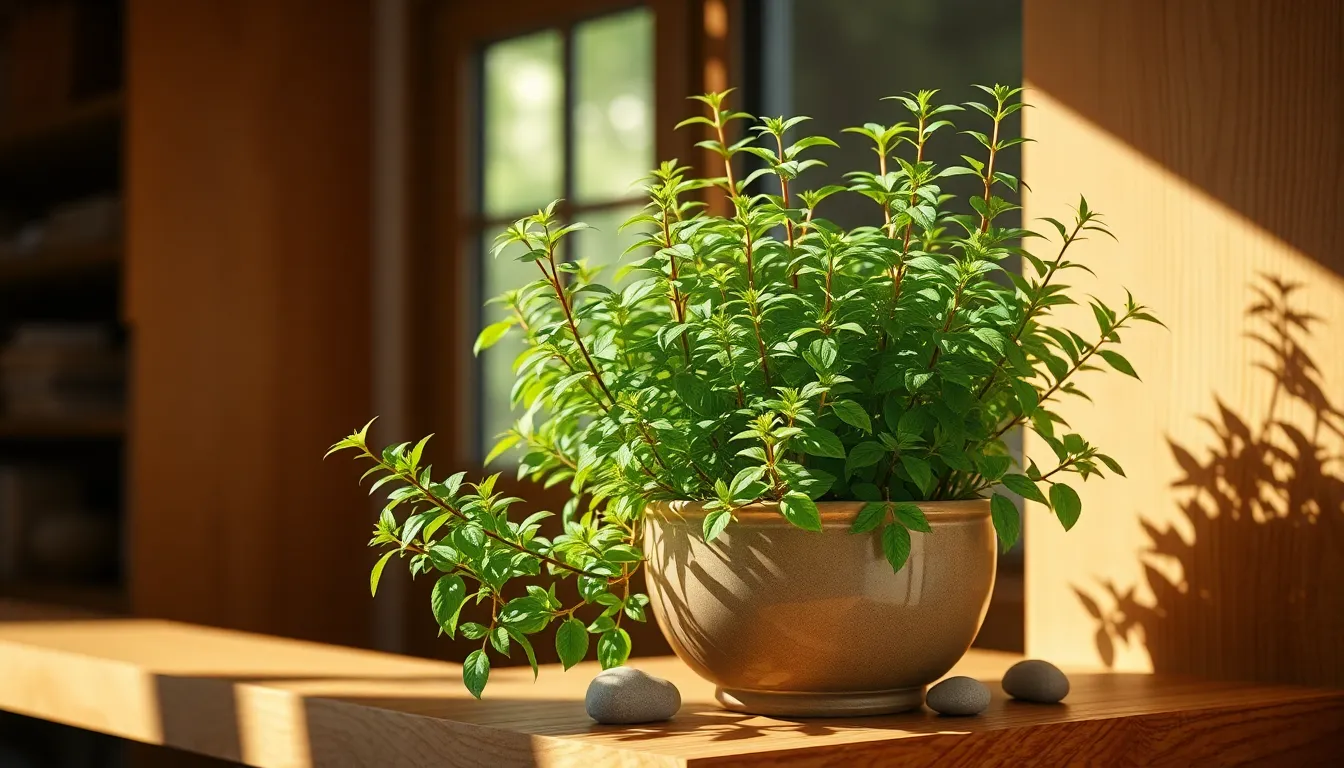
Most people associate catnip with feline excitement, but this herb offers surprising potential as a natural spider deterrent. Scientific research shows that catnip’s active compound, nepetalactone, demonstrates powerful insect-repelling properties that may extend to arachnids like spiders.
Nepetalactone’s Impact on Spider Behavior
Nepetalactone works by activating the TRPA1 receptor found in many arthropods, creating an aversive reaction to environmental irritants. While direct scientific studies on spiders remain limited, the biological mechanisms suggest these eight-legged creatures likely respond similarly to other invertebrates when exposed to this compound.
Research indicates that nepetalactone triggers irritant responses in arthropod sensory systems, potentially explaining why spiders might avoid areas where catnip is present. TRPA1 receptors, common across various arthropod species, mediate responses to chemical irritants and may be present in spider sensory pathways as well.
Studies focusing on mosquitoes and flies show consistent repelling effects from nepetalactone, providing scientific rationale for its potential effectiveness against spiders. Anecdotal evidence from gardeners supports these findings, with many reporting fewer spider sightings in areas where catnip grows abundantly.
| Catnip Spider Control Data | Details |
|---|---|
| Active Compound | Nepetalactone |
| Mechanism | TRPA1 receptor activation in arthropods |
| Scientific Support | Strong for insects, limited but plausible for spiders |
| Biological Rationale | Irritant response triggers aversion behavior |
Growing Catnip Without Attracting Neighborhood Cats
Container growing offers the most practical solution for catnip cultivation when you want to avoid feline visitors. Potted plants provide better control over the herb’s aggressive spreading tendencies while keeping curious cats at a manageable distance.
Strategic placement becomes crucial when growing catnip for spider control without creating a cat magnet. Position containers on elevated surfaces like shelves, window boxes, or hanging planters where cats can’t easily access them but the scent still disperses effectively.
Indoor cultivation presents another excellent option for maintaining catnip’s spider-repelling benefits while avoiding outdoor cat attractions. Place potted catnip plants near windows, doorways, and other common spider entry points where the nepetalactone can create natural barriers.
Contained garden beds with physical barriers can work outdoors if you prefer ground planting. Install chicken wire covers or decorative plant cages that allow airflow while preventing cats from rolling in the catnip.
Harvesting and Processing for Spider Control
Timing your catnip harvest correctly maximizes nepetalactone content for optimal spider deterrence. Cut stems just before the plant flowers, when essential oil concentrations reach their peak levels and provide maximum repelling power.
Proper drying techniques preserve the active compounds that make catnip effective against spiders. Hang harvested stems in a well-ventilated, dark area away from direct sunlight to maintain nepetalactone potency throughout the drying process.
Processing dried catnip into usable forms extends its spider-repelling applications around your home. Crush dried leaves and stems to create aromatic sachets for placement in corners, closets, and other areas where spiders commonly hide.
Oil infusion methods create concentrated catnip preparations for targeted spider control applications. Steep crushed dried catnip in carrier oils like olive or coconut oil for several weeks, then strain to create homemade repellent answers.
Essential oil extraction, while more complex, yields the most concentrated nepetalactone for serious spider control efforts. Steam distillation or solvent extraction methods produce potent oils that can be diluted and applied strategically around potential spider habitats.
Cedar: Woody Aromatics for Long-Term Spider Control
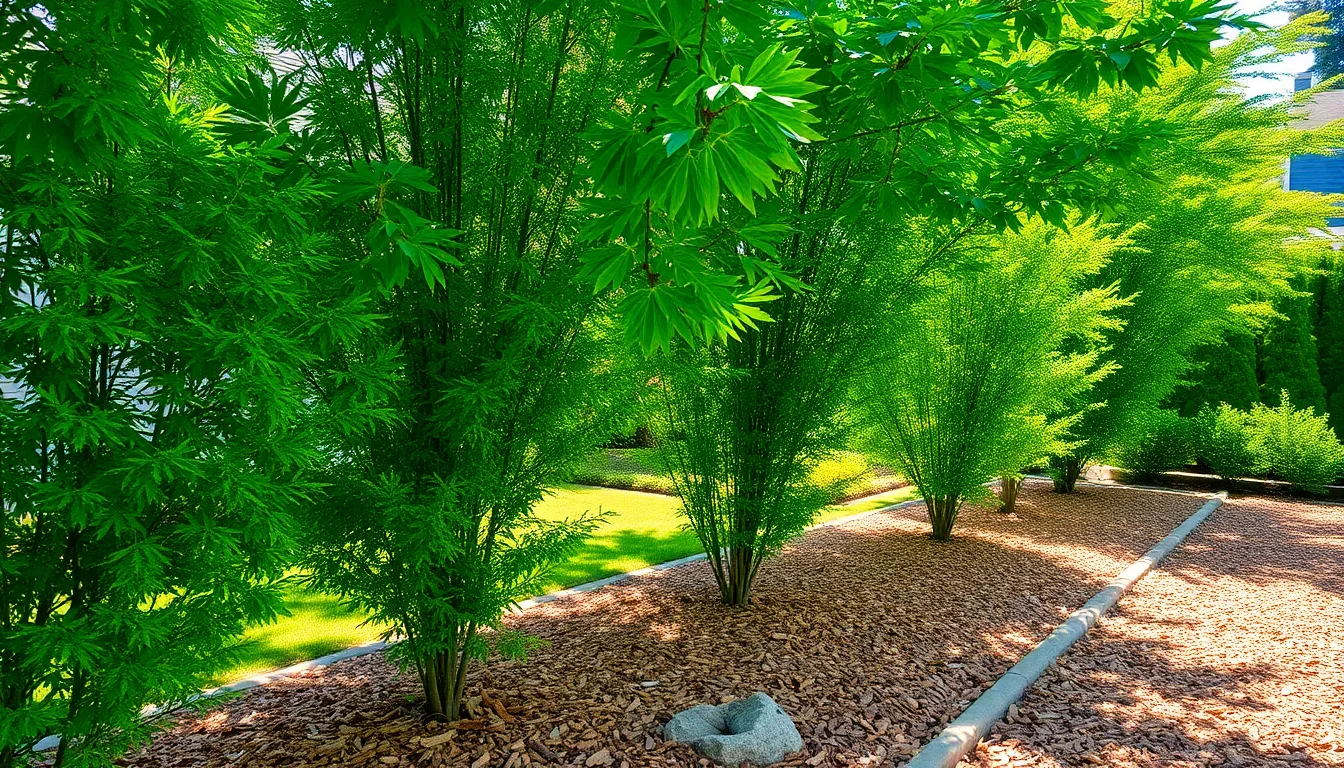
Cedar offers one of the most durable and versatile approaches to natural spider control. Its woody compounds create lasting aromatic barriers that consistently deter spiders from settling in treated areas.
Cedar Mulch and Chips as Natural Barriers
Creating physical boundaries around your property becomes incredibly effective with cedar mulch or chips. We recommend spreading a 2-3 inch layer around garden beds, foundation perimeters, and outdoor seating areas where spiders commonly gather. The strong scent from cedar wood naturally repels spiders while providing practical landscaping benefits like moisture retention and weed suppression.
Applying cedar chips near doorways and window wells establishes protective zones that spiders actively avoid. Fresh cedar products work best since they contain higher concentrations of aromatic oils compared to weathered materials. Replacing cedar mulch annually ensures maximum spider deterrent effectiveness throughout the growing season.
Planting Cedar Trees for Perimeter Protection
Establishing cedar trees around property edges provides continuous aromatic defense against spider invasions. We suggest planting Eastern Red Cedar or Western Red Cedar varieties at 10-15 foot intervals along fence lines or property boundaries. These evergreen trees release woody compounds year-round, creating permanent spider-repelling barriers.
Positioning cedar trees near common spider entry points like porches, decks, and outdoor storage areas maximizes their protective benefits. Young cedar trees establish quickly and begin producing aromatic compounds within their first growing season. Mature cedar trees continue intensifying their spider-repelling properties as they develop thicker bark and denser foliage.
Cedar Essential Oil Applications
Concentrating cedar’s spider-repelling power through essential oil applications delivers targeted protection for exact areas. We recommend mixing 10-15 drops of cedar essential oil with water in a spray bottle for treating doorframes, window sills, and basement corners where spiders frequently appear. The concentrated aromatic compounds create immediate barriers that spiders find overwhelming.
Applying cedar oil to cotton balls and placing them in closets, storage areas, and garage corners provides long-lasting spider deterrence. Refreshing these oil applications monthly maintains consistent aromatic levels that effectively repel spiders. Combining cedar oil with carrier oils like coconut or jojoba creates longer-lasting treatments for outdoor applications around decks and patios.
Conclusion
Creating a spider-free home doesn’t require harsh chemicals or expensive pest control services. We’ve explored how nature provides us with powerful allies in the form of aromatic plants that naturally repel these eight-legged visitors.
From the soothing scent of lavender to the invigorating aroma of peppermint these plants offer dual benefits. They’ll protect your home while adding beauty and fragrance to your living spaces.
The key to success lies in strategic placement and combining multiple plants for maximum effectiveness. Whether you choose indoor potted herbs or outdoor garden borders you’re creating natural barriers that spiders simply can’t tolerate.
Remember that fresh plants and their essential oils work best so regular maintenance and proper care will ensure your natural spider defense system remains strong year-round. Start with one or two varieties that appeal to you and gradually build your arsenal of spider-repelling plants.
Frequently Asked Questions
Do plants really repel spiders effectively?
Yes, certain plants contain natural compounds that repel spiders. Plants like lavender, peppermint, and eucalyptus release essential oils that overwhelm spiders’ sensory systems and disrupt their navigation abilities. These aromatic compounds create unwelcoming environments that spiders actively avoid, making them effective natural deterrents.
Which plant is most effective for keeping spiders away?
Lavender is considered one of the most effective spider-repelling plants. Its essential oils, particularly linalool and linalyl acetate, strongly disrupt spider sensory systems. English lavender has the highest concentration of these compounds, making it the top choice for natural spider control.
Where should I place spider-repelling plants in my home?
Place spider-repelling plants near entry points like doors, windows, and common problem areas where spiders typically enter. For indoor plants, position them on windowsills, near doorways, and in corners where spiders commonly hide. This creates natural barriers against spider invasions.
Can I use essential oils instead of live plants?
Yes, essential oils from plants like peppermint, eucalyptus, and lavender can be very effective. Mix a few drops with water in a spray bottle and apply around entry points. Essential oils provide concentrated spider-repelling compounds and offer immediate results compared to live plants.
How often do I need to replace or refresh these natural spider repellents?
Fresh plants are most effective and should be replaced when they lose their aromatic properties. Essential oil sprays need reapplication every 1-2 weeks. Dried herbs and peels should be refreshed monthly. Cedar mulch lasts longer but should be replaced annually for optimal effectiveness.
Are these plants safe around pets and children?
Most spider-repelling plants are generally safe, but some require caution. Lavender, rosemary, and basil are typically pet-safe. However, eucalyptus can be toxic to pets if ingested, and pennyroyal should be avoided around cats. Always research specific plants and consult your veterinarian before use.
Do these plants work for all types of spiders?
These plants are effective against many common household spider species. The aromatic compounds affect different spider families by interfering with their sensory systems. However, effectiveness may vary depending on spider species, plant concentration, and environmental factors. Combining multiple plants increases overall success rates.
Can I grow these spider-repelling plants indoors year-round?
Yes, many spider-repelling plants thrive indoors. Basil, peppermint, rosemary, and dwarf citrus varieties grow well in containers with proper light and care. Indoor growing ensures year-round spider protection and allows you to control plant placement for maximum effectiveness near problem areas.







